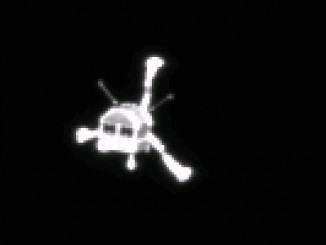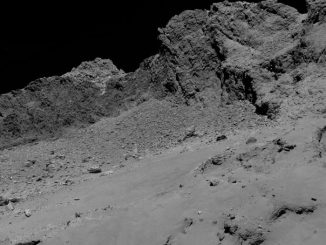 The European Space Agency reports it has received signals from the Philae lander on the surface of comet 67P/Churyumov–Gerasimenko. Mission managers had always hoped the lander would resume communications once the comet moved close enough to the Sun for the solar powered craft to recharge its batteries.
The European Space Agency reports it has received signals from the Philae lander on the surface of comet 67P/Churyumov–Gerasimenko. Mission managers had always hoped the lander would resume communications once the comet moved close enough to the Sun for the solar powered craft to recharge its batteries.
The signals were received via the lander’s Rosetta mothership by ground controllers at ESA’s European Space Operations Centre in Darmstadt at 22:28 CEST (2028 GMT) on Saturday, 13 June.
“Philae is doing very well: It has an operating temperature of -35ºC and has 24 Watts available,” DLR Philae Project Manager Dr. Stephan Ulamec told the European Space Agency’s Rosetta Blog. “The lander is ready for operations.”
The space agency said 300 packets of house keeping data were received in the first transmission but the lander had obviously emerged from hibernation earlier as there are more than 8000 more data packets stored in memory awaiting transmission.
On 12 November 2014 Philae became the first probe to land on a comet but it had bounced several times before appearing to settle in a crevice where its solar panels were starved of sunlight. It operated for 60 hours on its batteries before falling silent.



